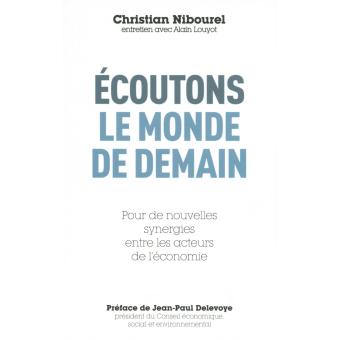
Inutile de préciser une fois encore à quel point la protection des données utilisateurs est importante tant les cybervols sont fréquents. Si chaque utilisateur peut, dans une certaine manière, contribuer à leur protection, chaque société se doit de mettre en place une sécurité digne de ce nom. Petit état des lieux concernant les plus grandes entreprises IT.
Eu égard aux récentes affaires d’espionnage, et à toutes celles dont ne nous ne sommes pas au courant, il convient de prendre le problème de la sécurité – que ce soit face aux « simples hackers » ou aux institutions gouvernementales comme la NSA – à bras le corps. Heureusement, les technologies actuelles permettent de mettre de nombreux bâtons dans les roues à quiconque souhaiteraient voler des données.
Cette étude en réunit cinq, parmi les plus importantes, et a tenté d’apprécier leur mise en place chez les plus grandes sociétés du Web. Tout le monde connaît le HTTPS, ce protocole sécurisé utilisé pour les transactions bancaires par exemple. Le HTTP Strict Transport Security (HSTS) permet, lui, de remettre les points sur les i à l’utilisateur, en lui déclarant expressément de communiquer de manière sécurisée (HTTPS par exemple).
Des communications cryptées avec les serveurs, c’est bien, mais si les différents serveurs ne communiquent pas entre eux de manière sécurisée, tout cela est bien inutile. Il s’agit ici de la première colonne du tableau – crypter tout échange interne entre les divers éléments de l’infrastructure -.
STARTTLS permet notamment de crypter un type d’échange bien particulier, et très courant sur le Net, les communications par email. Pour fonctionner, il faut cela dit que les deux fournisseurs de service de messagerie l’implémentent. Sinon, la communication ne sera pas cryptée. Autrement dit, plus nombreux seront les fournisseurs à l’utiliser, plus nos emails seront à l’abri des yeux indiscrets.
Dernière mesure, la confidentialité persistante (forward secrecy ou perfect forward secrecy, PFS) qui garantit que la découverte par un adversaire de la clé privée d’un correspondant (secret à long terme) ne compromet pas la confidentialité des communications passées.
Et à ce petit jeu, on note 5 excellents élèves: Dropbox, Google, SpiderOak (stockage de fichiers dans le cloud) and Sonic.net (FAI). D’autres travaillent à implémenter certaines de ces cinq mesures, on pense par exemple à twitter et Yahoo!. Espérons en tout cas que les grandes sociétés du Web s’y intéressent pour éviter que nos données soient accessibles sans notre consentement à des yeux indiscrets.
Eu égard aux récentes affaires d’espionnage, et à toutes celles dont ne nous ne sommes pas au courant, il convient de prendre le problème de la sécurité – que ce soit face aux « simples hackers » ou aux institutions gouvernementales comme la NSA – à bras le corps. Heureusement, les technologies actuelles permettent de mettre de nombreux bâtons dans les roues à quiconque souhaiteraient voler des données.
Cette étude en réunit cinq, parmi les plus importantes, et a tenté d’apprécier leur mise en place chez les plus grandes sociétés du Web. Tout le monde connaît le HTTPS, ce protocole sécurisé utilisé pour les transactions bancaires par exemple. Le HTTP Strict Transport Security (HSTS) permet, lui, de remettre les points sur les i à l’utilisateur, en lui déclarant expressément de communiquer de manière sécurisée (HTTPS par exemple).
Des communications cryptées avec les serveurs, c’est bien, mais si les différents serveurs ne communiquent pas entre eux de manière sécurisée, tout cela est bien inutile. Il s’agit ici de la première colonne du tableau – crypter tout échange interne entre les divers éléments de l’infrastructure -.
STARTTLS permet notamment de crypter un type d’échange bien particulier, et très courant sur le Net, les communications par email. Pour fonctionner, il faut cela dit que les deux fournisseurs de service de messagerie l’implémentent. Sinon, la communication ne sera pas cryptée. Autrement dit, plus nombreux seront les fournisseurs à l’utiliser, plus nos emails seront à l’abri des yeux indiscrets.
Dernière mesure, la confidentialité persistante (forward secrecy ou perfect forward secrecy, PFS) qui garantit que la découverte par un adversaire de la clé privée d’un correspondant (secret à long terme) ne compromet pas la confidentialité des communications passées.
Et à ce petit jeu, on note 5 excellents élèves: Dropbox, Google, SpiderOak (stockage de fichiers dans le cloud) and Sonic.net (FAI). D’autres travaillent à implémenter certaines de ces cinq mesures, on pense par exemple à twitter et Yahoo!. Espérons en tout cas que les grandes sociétés du Web s’y intéressent pour éviter que nos données soient accessibles sans notre consentement à des yeux indiscrets.






























 La vocation du Cercle du leadership est de réunir des dirigeants de grandes entreprises désireux de promouvoir une vision et des actions innovantes en matière de management et de leadership.
La vocation du Cercle du leadership est de réunir des dirigeants de grandes entreprises désireux de promouvoir une vision et des actions innovantes en matière de management et de leadership.

















 Le site internet Scope Santé permet depuis jeudi de choisir un hôpital ou une clinique «sur des critères objectifs».
Le site internet Scope Santé permet depuis jeudi de choisir un hôpital ou une clinique «sur des critères objectifs». 








